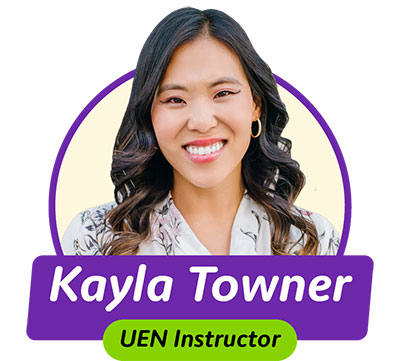UEN Teacher Tips
As a classroom teacher, have you ever asked yourself why students should take notes? According to Jennifer Gonzalez, the creator of Cult of Pedagogy, “Students need to gather, encode and store information, so note-taking would still be a fit.” Additionally, her research indicates that taking notes improves student learning. Note-taking helps students learn actively, be more attentive, know what to prioritize, learn more about a topic and improve organizational skills.
A study by Pam Mueller and Daniel Oppenheimer found that taking handwritten notes involves deeper processing compared to taking notes on a tablet or laptop. In this case, written notes beat the computer. However, as the need for differentiation arises, teaching students effective and purposeful note-taking using tablets or computers has become important.
Here are some tips to help K-12 students with note-taking:
-
Explicitly teach note-taking strategies. One effective way to improve note-taking skills is using Cornell Notes and sketchnoting. Start by dividing a blank page into several sections. At the top of the page, write down the topic, name, date and other relevant information. In the main section, take notes in real-time. On the left margin, pull out key ideas and at the bottom, summarize the notes in one or two sentences. Finally, have students read their notes afterward to reinforce their learning.
-
Add images and icons. Doodle notes and visual clues can help students retain information. Use icons and images to represent ideas. For example, use bullet points to list ideas, dividers to separate topics and icons to quickly reference important details. You can use a star for key ideas, a question mark for questions that still need to be answered, a big circle for essential details and so on.
-
Use graphic organizers. Some students find it overwhelming to start with a blank sheet of paper. To simplify the process, younger students can use graphic organizers that follow the Cornell Notes format but without the need to organize their papers.
-
Scaffold the process. Students may benefit from guided notes where the teacher provides an outline and students fill in the blanks. This approach can be particularly helpful for younger students or students who are still developing their note-taking skills, as it provides them with a clear structure to follow and helps to ensure that they don’t miss important information.
-
Practice, practice, practice
Watch below to see how you can implement this tip using Microsoft OneNote and Canva templates.
Helpful Resource:
-
Note-Taking: A Research Roundup by Jennifer Gonzalez (Cult of Pedagogy)
-
Improving Cornell Notes with Sketchnoting Techniques (YouTube)
-
The Pen is Mightier Than the Keyboard: Advantages of Longland over Laptop Note Taking
Kayla Towner is the Utah’s Online School Library (UOSL) Product Manager and a Teacher Fellow for Hope Street Group. She’s passionate about learning that focuses on student agency and encourages educators to expand their comfort zone. Before her work at UEN, Kayla was an elementary school teacher in Utah (Davis) and South Korea.

Share this tip:
You Might Also Like:
- End-of-Year Celebrations and Activities
- Screen Time: It’s About Quality
- Helpful Tools For When You’re Feeling Overwhelmed
- Grading Strategies and Reteach Opportunities
- UDL: Flexible Expression of Learning (and Instruction!)


 UTAH EDUCATION NETWORK
UTAH EDUCATION NETWORK

 Justin
Justin Braxton
Braxton Dani
Dani Rob
Rob Val
Val

